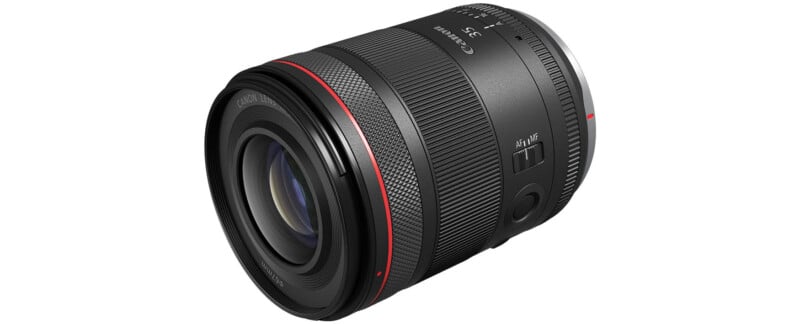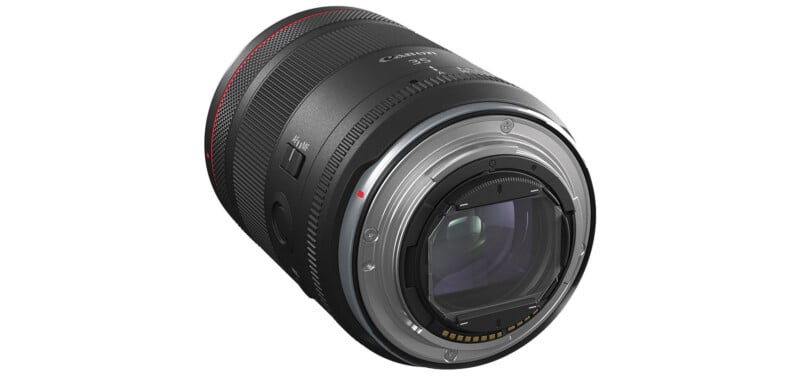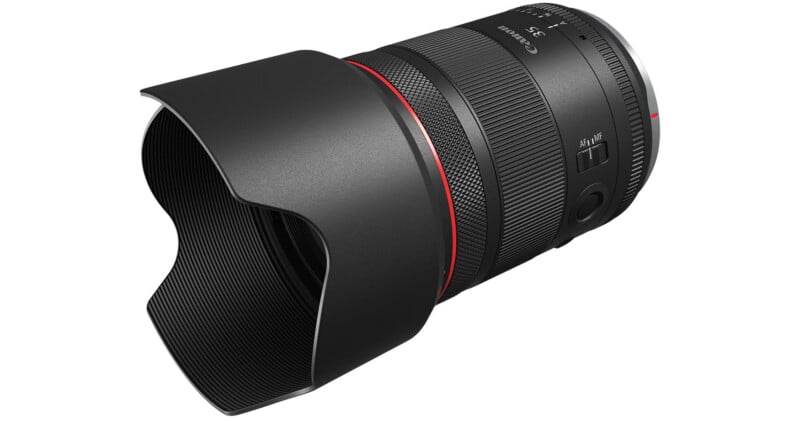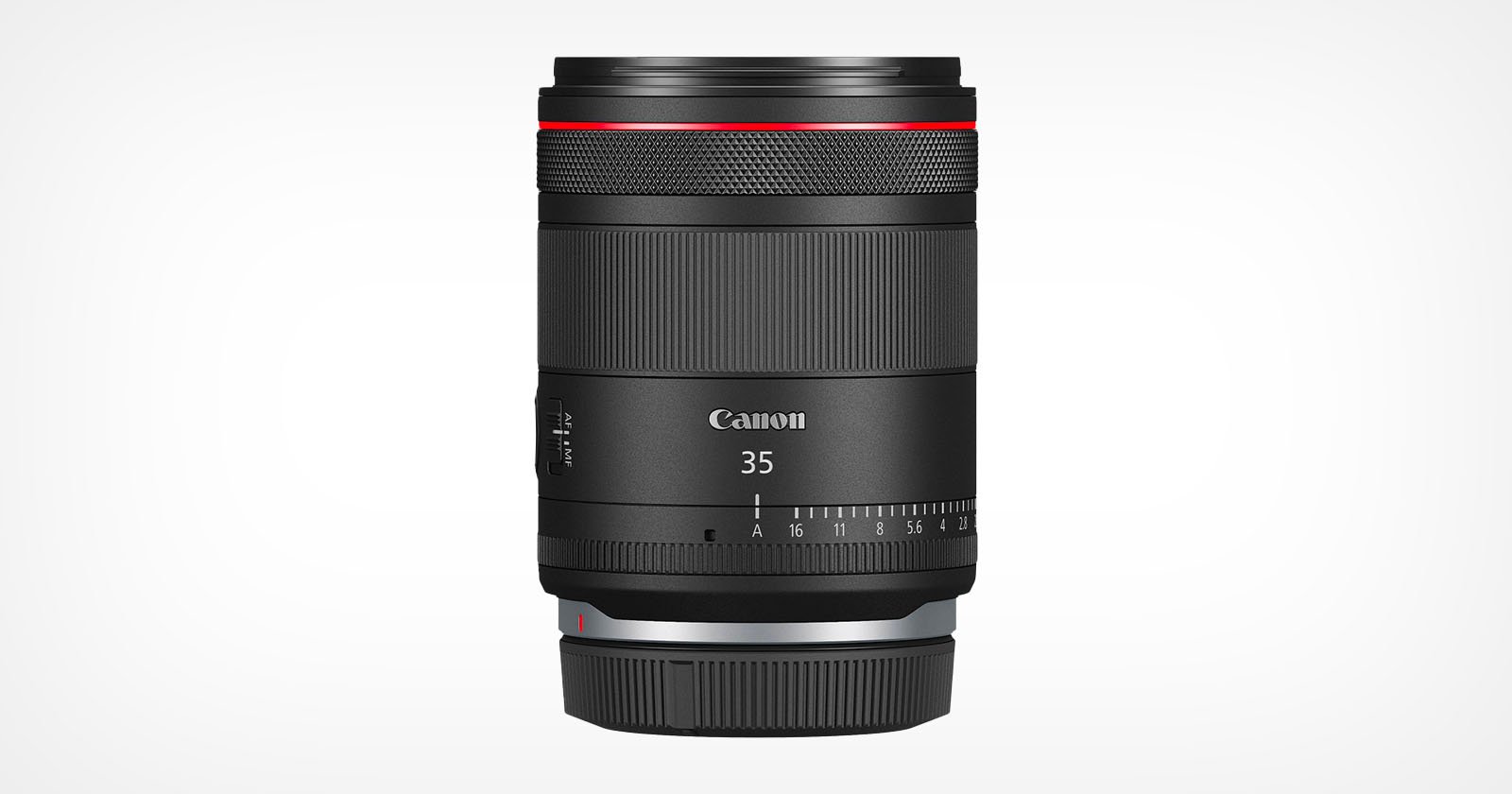Canon has announced the 35mm f/1.4L VCM prime lens, which is designed to work equally well for both video production and stills. Canon says it’s the first in a series of new primes designed to appeal to both types of content creators.
“This lens is the start of a new series of hybrid lenses, and with its prime, it fills a gap, as there has been no prime lens wider than 50mm in the L-series – until now,” says Canon.
It weighs 1.2 pounds (555 grams) and measures 3.0 by 3.9 inches (diameter over length), or 76.5 mm by 99.3 mm. Compared to Canon’s RF-mount 35mm f/1.8, the new L-series prime is heavier and larger, as is typical of the faster aperture and L-series brand; The 35mm f/1.8 Macro IS STM weighs 10.7 ounces (305 grams) and measures 2.93 by 2.57 inches (74.4 mm by 62.8 mm).
The company adds that the 35mm f/1.4L VCM is ideal for shooting in low light and features an external de-click manual aperture ring (or iris, for cinematographers). Strangely, this option is only available in video capture mode; when taking pictures, the aperture can only be controlled by the camera.
Canon also promises that there is very little focus breathing (this refers to a change in perspective when the focus changes) and that it has an “exclusive” L-series optical design. The button on the side of the lens isn’t just for AF lock, but it can also be customized for other functions, which is a nod to the hybrid nature of the design.

The lens is constructed of 14 elements arranged in 11 groups, including two ultra-low dispersion glass elements and two aspherical optical elements. It also features three coatings: Canon’s ASC (Air Sphere Coating, SSC (Super Spectra Coating) and Fluorine coating. The front filter size is 67mm and has an aperture range of f/1.4 to f/16 via diaphragm with 11 lamellae When combined with the EOS R3, Canon says it has seven steps of vibration correction.
The 35mm f/1.4L VCM features a combination of Canon’s Nano USM (Ultrasonic Motor) and VCM (Voice Coil Motor) — hence the optic’s name — to drive the autofocus system and when equipped with an EOS R5 or R6 camera, covers approximately 90% of the Dual Pixel’s horizontal plane and 100% of the vertical. The VCM is responsible for moving four relatively heavy lens elements and works in tandem with the Nano USM to create a coordinated dual system rather than a single main focus group.
It’s the first time Canon has released a lens with VCM—and is further unusual thanks to the new Coordinated Motion design with USM—which is very similar to linear drive autofocus systems from Sony and other manufacturers. Canon says it used this design because it works well for both photo and video applications.
For manual focus, the control ring has the dual function of being able to control it as well as be programmed to perform other functions (such as changing ISO) from the attached camera’s menu.

The Canon 35mm f/1.4L VCM is expected to be available in June for $1,500. This makes it one of the most expensive 35mm AF mirrorless lenses on the market after the Leica Summicron-SL 35mm f/2 and the Leica APO-Summicron-SL 35mm f/2 ASPH.
A signal to the market?
The 35mm f/1.4L VCM is intended to be considered a standard high-performance lens for video and photo users; equally performing on both the R5 and R6 series, as well as the C70 and the new C400 cameras, for example. Although Canon has released RF-mount zoom lenses that are framed this way – the 24-105mm f/2.8 is one such example – the 35mm f/1.4L VCM is the first prime lens to release with this description since the move to mirrorless.

Canon has, of course, produced prime lenses that are suitable for use in video applications, but the company’s language around the 35mm f/1.4L VCM indicates that this is the first time the company has released a “hybrid” prime lens where the performance , when used to capture photos and video is equal. The emphasis on video can be seen in the optical design that limits breathing, the customizable button, the de-click external aperture ring and the fact that Canon is announcing it alongside the C400 at CineGear, an exhibition specifically aimed at cinematographers.
At the same time, it is not a “cinema lens” and is clearly intended to be ideal for photographers as well. If anything, Canon’s language and choice of location are clear signs to the industry that it intends to take the idea of ”hybrid” much more seriously moving forward – especially given that it has signaled that it is just the first in a series of upcoming optics.
Update 6/5: Added a line explaining that the aperture ring cannot be used in photo mode.
Image Credits: Canon



